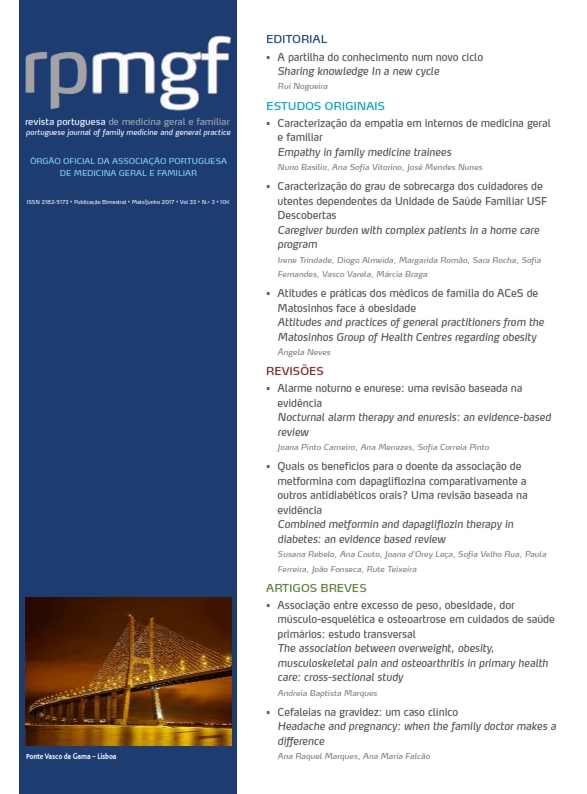Nocturnal alarm therapy and enuresis: an evidence-based review
DOI:
https://doi.org/10.32385/rpmgf.v33i3.12162Keywords:
Nocturnal enuresis, Clinical alarmsAbstract
Introduction: Nocturnal enuresis is a common problem, affecting about 15% of children between the ages of five and six years. Different treatments have been studied in order to diminish the potentially stigmatizing impact of NE, both for the child and the family. These include nocturnal alarms and behavior modification affecting sleep. Aim: The aim of this review was to assess the evidence for the effectiveness of nocturnal alarms in the treatment of nocturnal enuresis. Methods: A bibliographic review of international databases was conducted, using the MeSH terms ‘Nocturnal enuresis’ AND ‘Clinical alarms’. We also consulted the Índex RMP database using the search terms Enurese noturna and Alarme. We selected meta-analyses, systematic reviews, randomized controlled trials, observational studies, and clinical guidelines written in Portuguese and English that were published between January 2005 and January 2015. The Oxford Centre for Evidence-Based Medicine criteria were used to establish the Level of Evidence (LE). Results: From a total of 52 articles found, nine met the inclusion criteria. These included three systematic reviews, three clinical trials, and three guidelines. Most studies found that NA is more beneficial than other non-pharmacologic options. When compared to desmopressin, the use of NA has shown equivalent effectiveness. Its use is associated with less risk of relapse and a better response when NE occurs due to diminished nocturnal bladder capacity. However, beneficial results take longer to appear with NA, parental collaboration is needed, and there is a risk of decreased adherence to this treatment. Clinical guidelines agree with the results of published trials. Discussion: Given the potential benefits of nocturnal alarms in the treatment of nocturnal enuresis (Level of Evidence 1, Strength of Recommendation A), the family doctor should consider this treatment for NE resistant to initial measures, thus avoiding the need for pharmacologic intervention or premature referral.Downloads
Downloads
Published
Issue
Section
License
The authors will assign to the RPMGF the sole right to publish and distribute the content of the manuscript specified in this declaration via physical, electronic, broadcasting or any other medium that may come into existence. They also grant the RPMGF the right to use and exploit this manuscript, in particular by assigning, selling or licensing its content. This permission is permanent and takes effect from the moment the manuscript is submitted, has the maximum duration allowed by applicable Portuguese or international law and is of worldwide scope. The authors further declare that this assignment is made free of charge. If the RPMGF informs the authors that it is not going to publish their manuscript, the exclusive assignment of rights ceases forthwith.
The authors authorise the RPMGF (or any entity it may appoint) to act on their behalf when it believes that copyright may have been infringed.





